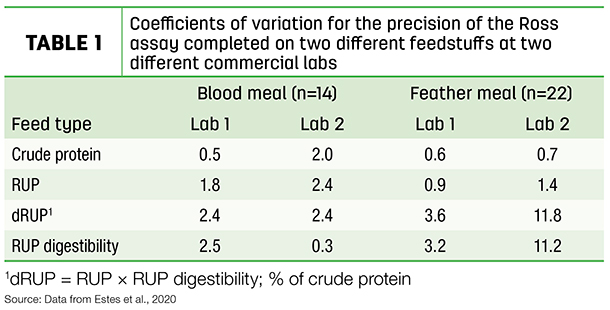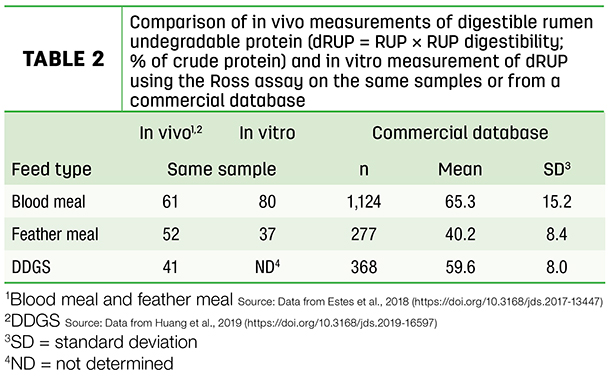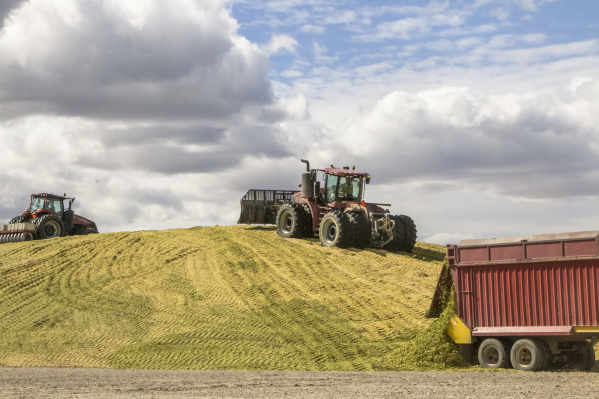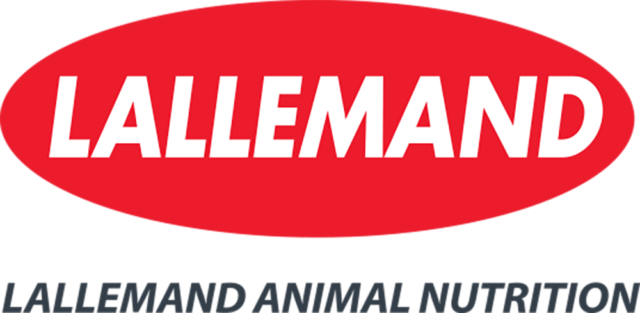This article is the first of a two-part series. Accurate quantification of digestible amino acid supply from high-protein feedstuffs is important for characterization of feeds.
The key metrics for evaluation of high-protein feeds for dairy cows are how much of the protein bypasses the rumen, which is termed rumen-undegradable protein (RUP), the digestibility of this RUP fraction (RUP digestibility), along with amino acid profile. Digestible RUP as percent of crude protein (dRUP = RUP x RUP digestibility) represents the amount of feed protein supplied to the animal from a given ingredient. Crude protein (CP) is widely measured and can generally be assessed with good accuracy and precision within and across labs. In contrast, measuring RUP and RUP digestibility is challenging.
In vivo methods, which directly measure appearance of protein in the rumen, are generally considered the gold standards. However, these methods are generally only used in university research settings. In vitro methods for determining protein bioavailability are primarily utilized by commercial labs. With the recent development of the Ross assay, commercial lab adaptation of in vitro protein digestibility methods has grown rapidly.
Precision of the Ross assay
Precision measures how closely two or more measurements of the same item are to one another. To determine the precision of a bathroom scale, you just have to step on it repeatedly within a short period of time. If the scale reports very similar weights, then it is precise. It may not be accurate, making you believe you are slimmer than you really are. To determine the precision of a lab assay, multiple measurements must be completed on the same sample. A precise assay will give the same or very similar results every time. The coefficient of variation (CV; which is standard deviation divided by the average) can be used to quantify assay precision.
In a recent experiment, the precision of the Ross assay was determined by repeatedly testing the same blood meal and feather meal samples at two different commercial labs (Table 1).

From this analysis, dRUP (RUP × RUP digestibility) of blood meal was repeatable with a CV of 2.4% within both labs. However, the dRUP of feather meal was less repeatable and varied across the two labs, with the CV being 3.6% and 11.8% for each lab. Although not as precise as other common lab assays such as CP or dry matter, a CV of 3.6% or less is reasonable given the complexity of the assay. However, a CV of 11.8% limits the practical usefulness of the assay. For these results, dRUP ranged from 26% to 42% of CP for the same sample. If I were to tell you that neutral detergent fiber (NDF) of the same sample of corn silage analyzed at the same lab could range from 26% to 42%, would you have much confidence in the results of that assay? I wouldn’t.
An assay can be precise within a given lab but not so precise across labs. This is clearly the case for the Ross assay. For example, the average dRUP measured from the same sample of blood meal using the same Ross assay across the two labs differed by more than 25 percentage points (66% versus 93% of CP). The dRUP of feather meal was more consistent across labs but still differed by 6 points (40% versus 34% of CP). Therefore, a single lab should be used for the Ross assay and characterization of high-protein feeds.
Accuracy of the Ross assay
Accuracy is defined as how close a measurement is to the true value. An accurate bathroom scale will, on average, report your weight correctly. To determine the accuracy of the Ross assay, we must first define the true values to compare results of the assay to. For of this, we utilize dRUP (percent CP) value for blood meal, feather meal and dried distillers grains (DDGS) measured via an in vivo stable isotope method at Virginia Tech. We compared the results of these publications to Ross assay results extracted from a commercial lab database (n = 7355; Table 2).

We also compared the blood meal and hydrolyzed feather meal results from the in vivo study to the Ross results from multiple labs, since the same feed samples were used in both studies.
The commercial lab data should provide a representation of the population of blood meal, feather meal and DDGS, though these samples are not a random sample of the broader population. The in vivo samples in each experiment were chosen to represent the population within each feed category. Because the in vivo sample are a single source, the accuracy interpretation should be approached with caution when comparing to the large commercial database, as the sample analyzed in vivo may or may not be representative of the population for a given feed.
For blood meal, dRUP from the Ross assay appears to be relatively accurate as indicated by similar values between the two methods (65% versus 61% of CP; Table 2).
However, this may depend on which lab is used. As discussed above, dRUP of the same sample differed by 25 points across two labs. One lab was accurate; the other lab was not. The assay was not accurate for feather meal or DDGS when compared to the large dataset. The Ross assay underestimated dRUP for feather meal (39% versus 52% of CP) and overestimated dRUP for DDGS (59% versus 41% of CP). Digestible RUP (percent of CP) for feather meal was likely underestimated because estimated RUP digestibility was lower for the assay (49%) compared to experimentally estimated values (60% to 70%). For DDGS, dRUP was likely overestimated with the Ross assay because RUP was much greater for the assay (76% of CP) compared to values estimated experimentally using other methods (45% to 55% of CP). Therefore, the accuracy of the Ross assay likely depends on lab and feedstuff.
Conclusions
No assay is perfect; however, assays such as the Ross assay can provide value for decision-making and improved ration formulation. The Ross assay, if one understands what it is capable of as well as its limitations, can be useful. It appears that precision of the Ross assay is reasonable for blood meal within a lab but not at all precise across labs. Accuracy, however, depends on the lab for blood meal. For hydrolyzed feather meal, precision of the assay can be a challenge depending on the lab. The accuracy of the Ross assay is considered poor for feather meal and DDGS based on comparisons to in vivo testing. It is unknown how precise or accurate the assay is for other feedstuffs. The most useful aspect of the Ross assay is its ability to rank feeds, which will be further discussed in Part II.







